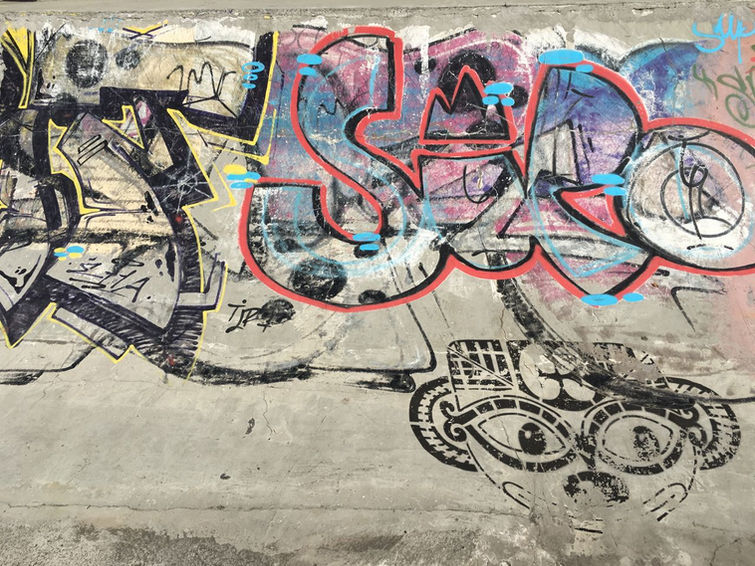TikiMiki - Tahiti Street Paintings
Where Do We Come From? What Are We? Where Are We Going?
Gauguin’s poignant title provokes a dialogue that is no less topical now than it was in 1898 when he completed his seminal painting.
Our life is often characterised by mythologising the past, lamenting the present and worrying about the future. We have a tendency to think back to a golden age where society flourished in harmony with nature and life was simple, easy and authentic. But the reality is that there is no eden to return to, if ever there was one. Life is imperfect. A compromise. A collision of aspirations, dreams, fears amidst our daily reality.
Many people perhaps discontent with the pressures of modern living, crave to escape to a deserted island paradise. Gauguin, like others before and after him, upon reading descriptions of Tahiti as a latter day Eden of easy living and free love, set sail for the South Pacific. He was drawn by the exoticism, the lure of the mystical, the primitive.
‘His disappointment on arrival was profound. Tahiti was Europeanised, visually unspectacular (at least what he first saw of it) and expensive. Scant traces of indigenous religion remained; Christian missionaries had seen to that. But what could he do? Turn around and go back? Go back to what? So he stayed and set about creating the Tahiti he wanted in his art.’ Holland Cotter - art review - New York Times
Paradise was lost. Isn’t paradise always lost? By its nature - like any exotic tourist destination - it is ‘spoilt’ by the fact of us being there. Gauguin could have represented the imperfect reality that he found, but he chose not to. He needed a paradise, and his audiences in Paris too. Gauguin portrayed Tahitians, mainly woman, as passive spiritual beauties living in a timeless natural world that was far from his actual experience of cultural repression and colonial control. The artist, once a seeker of a worldly paradise, not having found what he was looking for, invented it.
Gauguin's Tahiti remains a fantasy, and not necessarily a benign one. It adheres to a European model of a primeval paradise: strange religions, half-nude inhabitants, luxuriant landscape. It is ironic that Gauguin’s vision of Tahiti has now been adopted and absorbed into the fabric of the Tahitian identity.
I am not interested in perpetuating a myth. The daily life I experience in Tahiti is far too vibrant, messy, joyful, imperfect and alive for me to want to reduce it to a cliché. I am drawn to the contradictions and the struggle because it is the same the world over.
Like many cultures Tahitians strive to integrate the narrative of their past with the invasion of global popular culture. The Tiki has become a brand, a logo or an icon for Tahiti, in the same way as Mickey Mouse acts like a global ambassador for the pervasive soft power of Disney and the American dream. Its iconography transcends borders and continents. TiKiMiKi represents this alliance between Primitive and popular culture.
In a time where the proliferation of brands and logos pervade every corner of the world, and society is ever influenced by modern technology and trends, it is easy for cultural icons to also be reduced to logos. For the depth and history of the past to be condensed into a thin glossy Disney veneer.
How does a culture thrive and evolve in the face of an ever changing world? Who defines what is authentic and inauthentic? If a culture ceases to evolve, is it alive? To these questions there are no obvious answers. This new series of work explores these themes. From global issues of overconsumption, issues of waste and landfill, the influence of America and global popular culture and lifestyle. For me there is a lesson in this. That we cannot return to the past, because the past is as fictional as the future. The paradise sought is to be found in the imperfection of our present. Cultures evolve, change and grow to reflect the present concerns, awareness and technology. It is not a closed book but an ever expanding story which repeatedly poses the question….
What does it mean to be Tahitian today?
Please see BOOKS section for complete series available in the book 'Tahiti Street Paintings'




















